The Ford F-150 wears the badge of a pioneering auto giant, and it wears the moniker well. We explore its notable engine options.
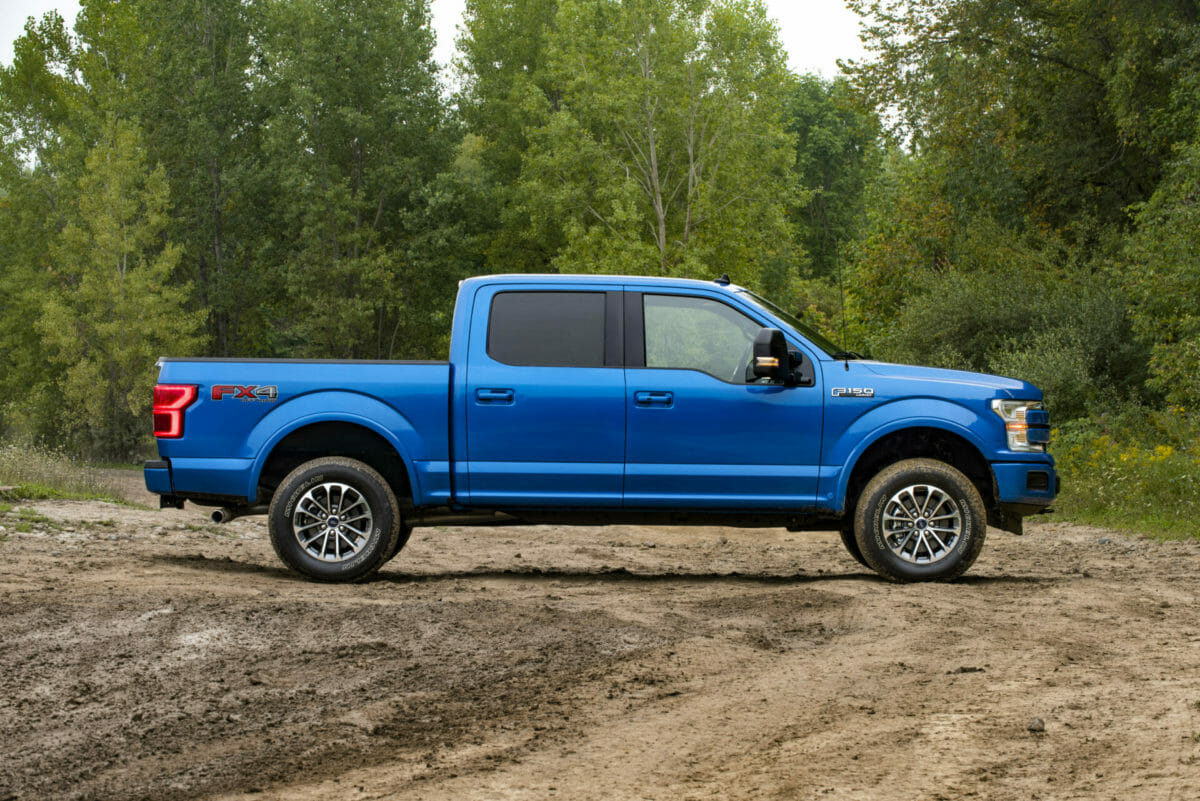
The Ford F-150 bears the name of a pioneering auto giant and it wears the moniker well. Not only is it a household name, it’s the image you see in your head when someone says they bought a truck. You see an F-150.
This Ford F-150 pickup is the most sold truck on the planet and has been going strong since Ford released the Model TT. The heart and soul of any automobile is the engine –– but it feels a little more important when it comes to a truck.
Because of what we ask trucks to do, there can’t be a slouch of an engine paired with a best-selling chassis. By that relation, we all know the engine matters as much as the metal that encases it.
We did a ton of research and explored every engine from every F-150 since its inception. Let’s start with the available options and where the F-series was born.
F-150’s Six Available Engines
3.3L Ti-VCT V6XL and XLT
- 290 horsepower
- 265 lb.-ft. of torque
- towing: 7,700 pounds
- max payload: 1,990 lbs.
2.7L EcoBoost V6XL, XLT, and Lariat
- 325 horsepower
- 400 lb.-ft. of torque
- towing: 8,500 lbs.
- max payload: 2,470 lbs.
3.5L EcoBoost V6Raptor, Limited
- 375 horsepower
- 470 lb.-ft. of torque
- towing: 13,200 lbs.
- max payload: 3,230 lbs.
High-Output 3.5L EcoBoost V6Raptor and Limited
- 450 horsepower
- 510 lb.-ft. of torque
- towing: 11,000 lbs.
- max payload: 1,520 lbs.
3.0L Power Stroke Diesel V6XL, XLT, Lariat, King Ranch, and Platinum
- 250 horsepower
- 440 lb.-ft. of torque
- towing: 11,500 lbs.
- max payload: 1,940 lbs.
5.0L Ti-VCT V8XL, XLT, Lariat, King Ranch, and Platinum
- 395 horsepower
- 400 lb.-ft. of torque
- towing: 10,600 lbs.
- max payload: 3,270 lbs.
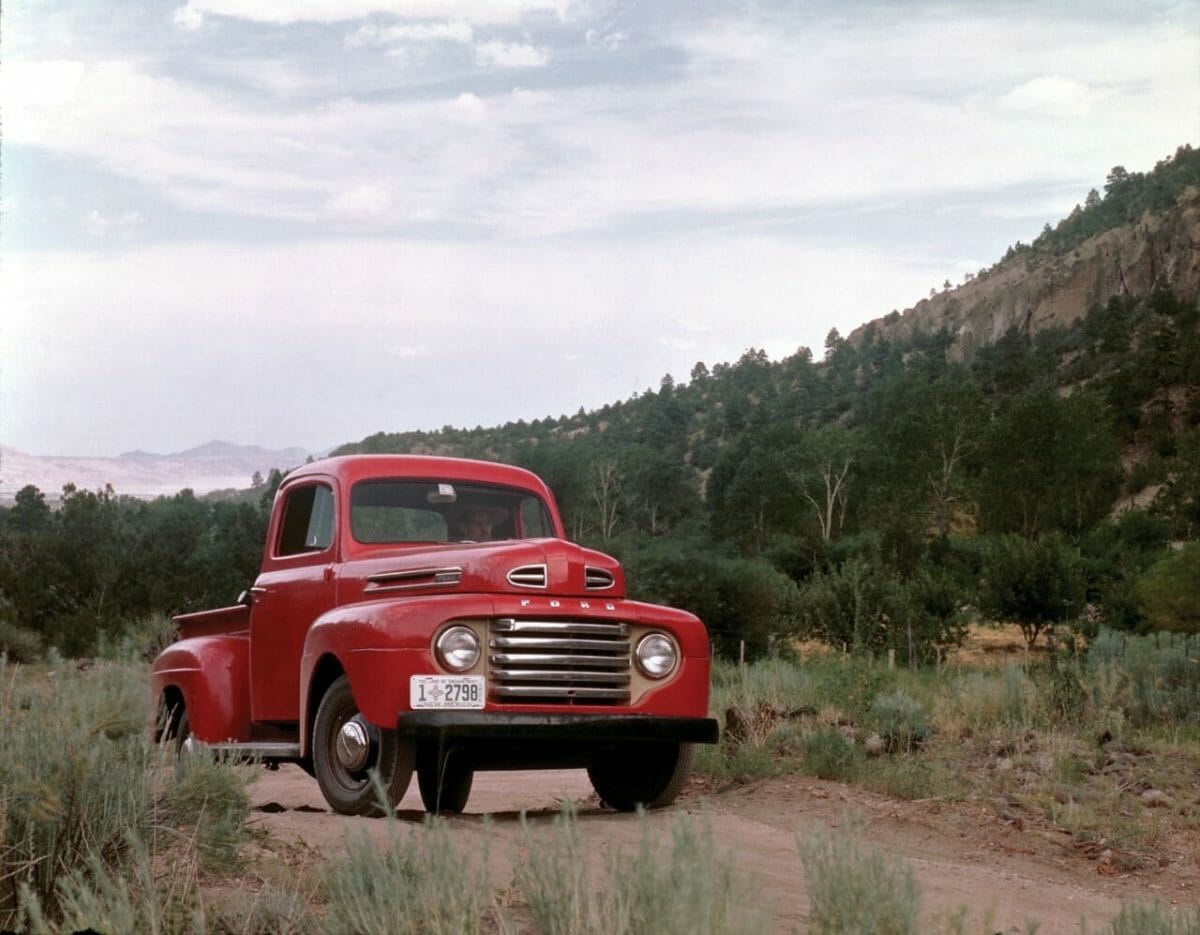
F-150 1st Gen. (1948–1952): Launching a Legend
In 1948, they probably thought we’d have flying trucks by now. We know at the very least that George Orwell thought the ’80s were going to be a fully dystopian and futuristic society in his book 1984.
While Orwell naval-gazed about what might happen to future generations, Ford was releasing its first iteration of a truck that would change the world –– literally.
The “Bonus Built” series was released in F1 to F8 designations, and the first F-Series truck came in specific weight specifications covering a myriad of different job types, from light-duty pickup to a cab over engine (COE) design labeled the “Big Job.”
For the first-generation Ford, you had options. In order, they offered:
- 3.7L Inline Six-cylinder
- 3.9L Flathead V8
- 4.2L I6
- 5.5L Flathead V8
- 3.5L I6
- 4.6L Y-block V8
- 5.2L Y-block V8
The Flathead became a synonymous term with Ford engines and in most cases is called a Ford Flathead because of its flat cylinder heads.
The Y-block got its catchy name from the deeper-than-usual crankcase or “skirt” that gave the engine a “Y” look when including the V of the upper cylinder heads. Not just a catchy name, the Y-block was also Ford’s first OHV engine that was produced by Lincoln.
All of these engines served Ford well from 1948 to 1952 until the Blue Oval introduced its next generation.
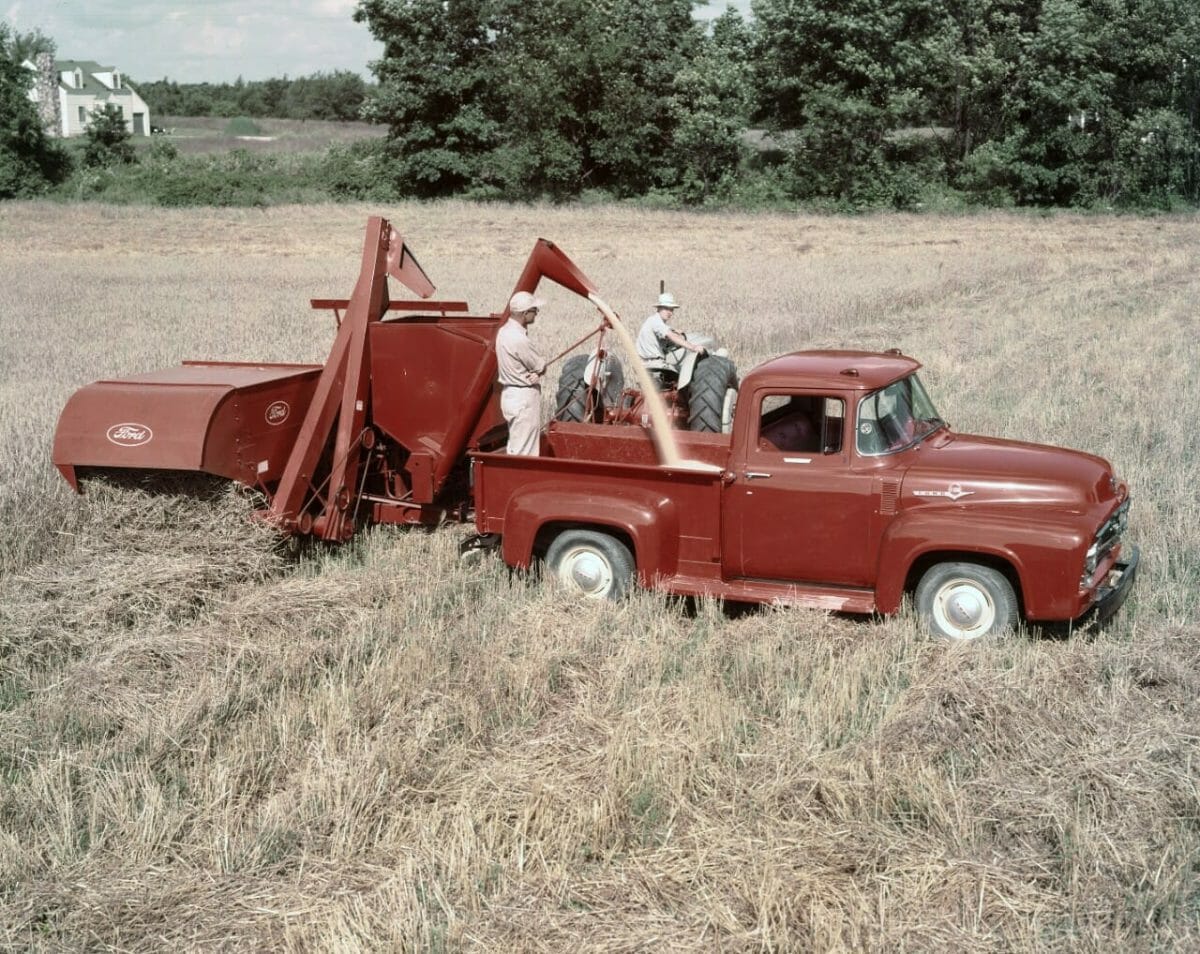
F-150 2nd Gen. (1953–1956): Better Engines
Elvis Presley was about to start his musical career when Ford released its next-generation F-series in 1953. The new F-100 came with more generous dimensions overall, an updated chassis, and best of all, better engines.
However, prior to introducing these more powerful engines, the nomenclature of Ford’s F-series changed, and many of the changes are still used today. The F1 became the F-100, the F2 and F3 joined forces and became the F-250, and the F4 became the F-350 –– names which probably all look familiar.
The second-generation lineup dropped the Bonus Built name and rebranded it as the “Triple Economy” series, which aligned with their new naming system. Ford cut a couple of engines but kept the majority and added:
- 3.9L Y-block V8
- 4.2L Y-block V8
- larger 5.9L Lincoln Y-block V8
Also notable was the introduction of an updated 223 cu-in 3.7L I6 called the “Mileage Maker.” This was, mainly, tweaks to the carburetor that controlled spark advance so ignition would be advantageous to squeezing all horsepower out of your precious fuel.
Also notable was the Ford-o-Matic three-speed automatic transmission made by Borg-Warner, and would be a platform for later automatic transmissions to evolve from.
F-150 3rd Gen. (1957–1960): Big Engine Updates
The third-generation F-series received a few mentionable updates. With plenty of design updates and even more distilling of engines (three total now), a big change was that Ford was the first of the “Big Three” to produce a four-wheel-drive in-house. This was normally an outsourced project for Marmon-Herrington, which is known for their axles and transfer cases, to handle.
With a decidedly more modern design, a two-headlight system (instead of four), and a clamshell hood, Ford also narrowed down the engine offerings to three:
- 3.7L Mileage Maker I6 (returning for another generation)
- 4.5L Y-block V8
- 4.8L Y-block V8
Worth mentioning: Ford was using the 272 4.5L Y-block V8 as an answer to Chevrolet’s 265 small-block V8, thus shedding light on the age-old friendly feud between Chevy and Ford owners. The 4.8L Y-block V8 didn’t only make it into trucks but also the Thunderbird.
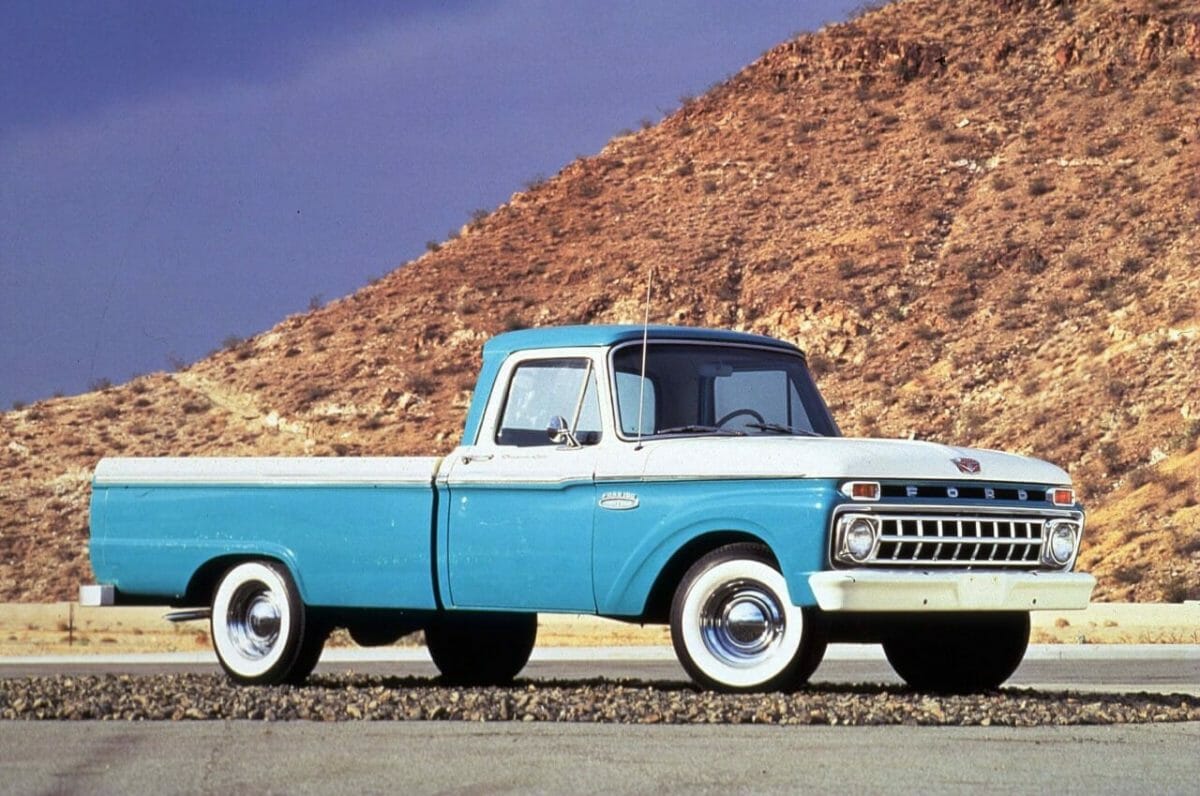
F-150 4th Gen. (1961–1966): Surpassing 200 HP
Imagine if you will a trip to the hardware store to buy something for a home project as Elvis’ 1960 hit “It’s Now or Never” is playing on the radio in your brand-new Ford F-100. In the Sixties, trucks continued to entrench themselves into American culture. Ford was maximizing this opportunity by giving the people what they wanted: more options.
The engine technology was moving quickly by the Sixties and the more choices potential buyers had, the more possibilities for sales. Here’s the lineup for this generation:
- 3.7L Mileage Maker I6 continued its success
- 4.8L Y-block V8 came over from the previous generation
- 4.7L Windsor V8 appears for the first time
Additionally, there were a couple of in-line sixes with the 3.9L I6 and the 4.9L I6.
Finally, the 5.8L FE V8 pushed out 208 horsepower, which was a milestone for the F-series platform — it was the first time any Ford truck surpassed 200 horsepower.
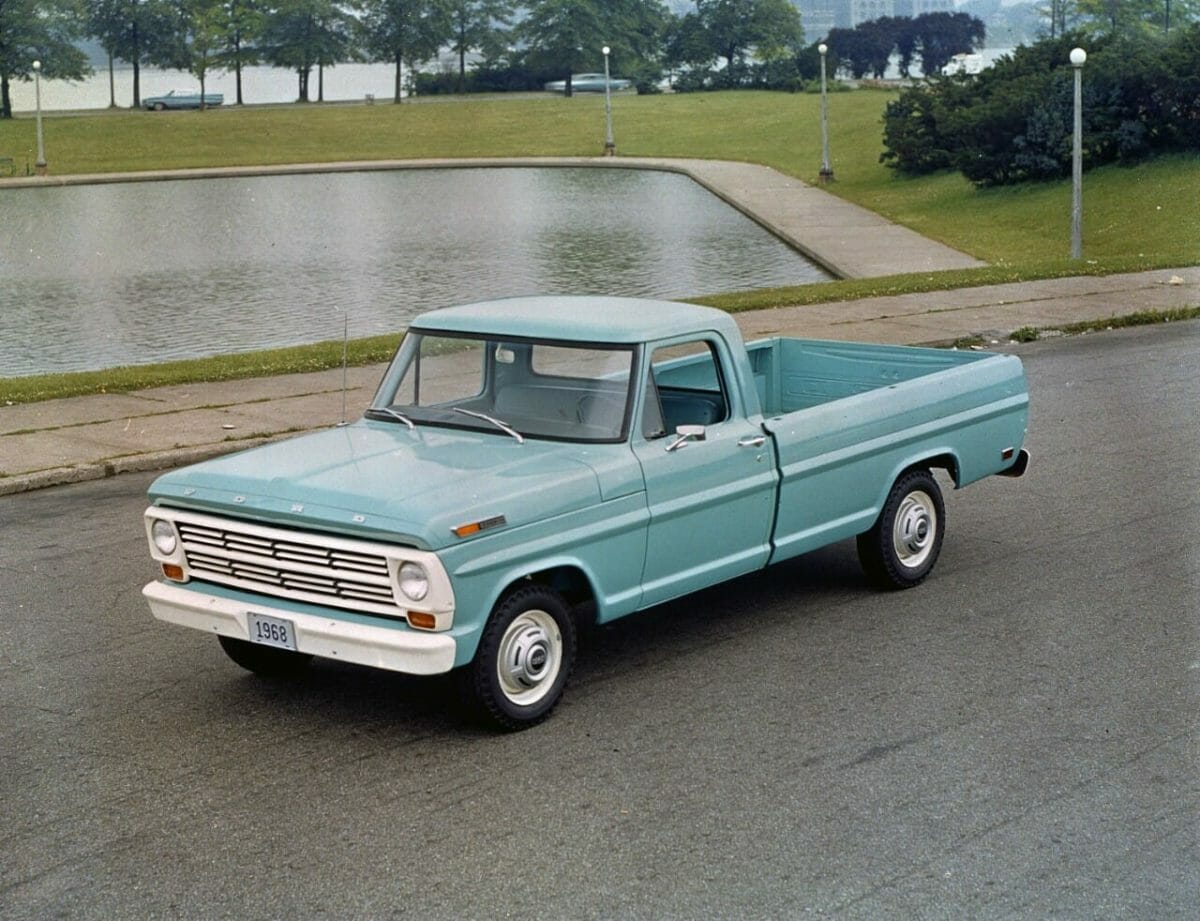
F-150 5th Gen. (1967–1972): Unique Engine Choices
While Ford was using the same chassis as the revised fourth generation from 1965, MoCo did release some updates for the fifth-generation F-Series. This included a wider cab (by three inches), new wrap-around turn signals, and unique body and engine choices for specifically the 1967 model year. The full list of engine options were as follows:
- 2.8L Thriftpower I6
- 3.9L I6
- 4.9L I6 (for the straight-sixes)
Released for the 1968 model year and beyond were:
- 5.0L Windsor V8
- 5.8L FE V8 (and late, the 5.9L FE V8)
- 6.4L FE V8
Interestingly, this generation of trucks was the first time there was factory-installed air conditioning –– a project that normally fell to individual dealerships.
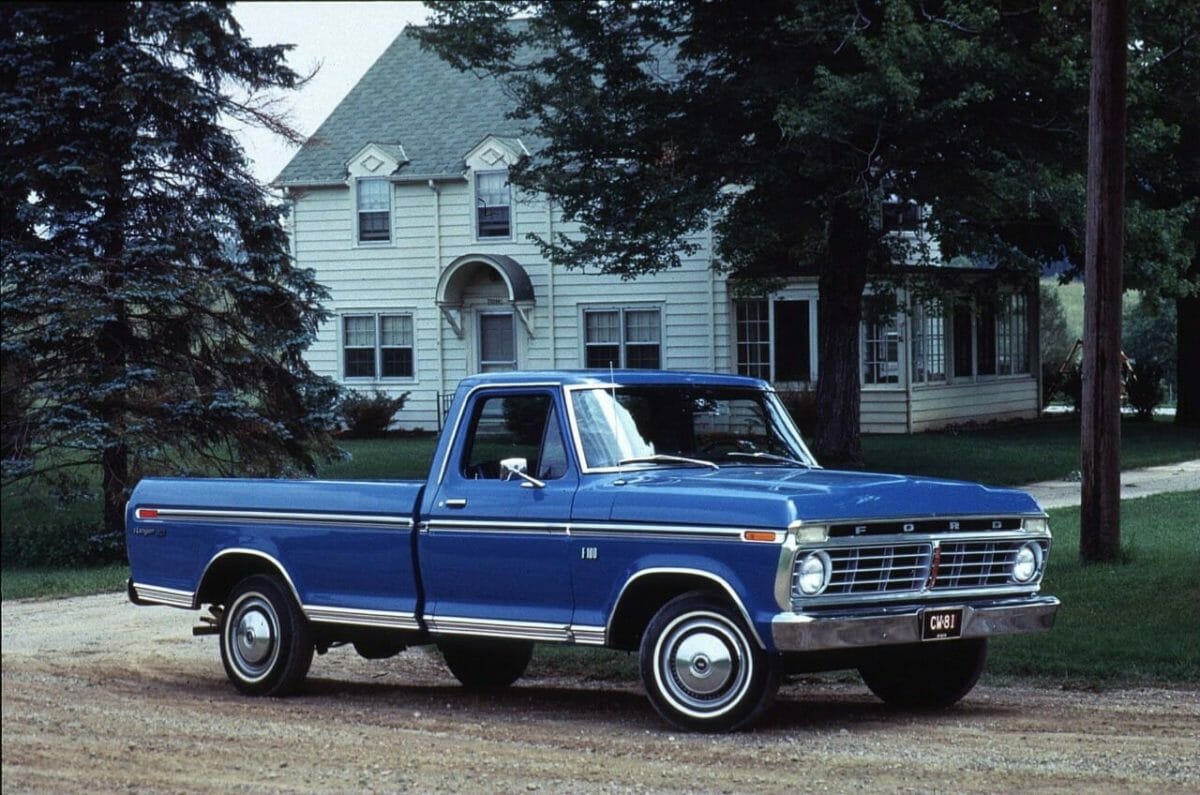
F-150 6th Gen. (1973–1979): New Engines & Body Designs
In the sixth generation, Ford was rounding out the Seventies with new engines and body designs on the same fourth-generation chassis, but with significant upgrades.
The model years starting in 1973 came with disc brakes, a double-walled truck bed, and rust-busting zinc coated and zinc primed galvanized steel.
Up to this point, the F-100 ruled the naming convention, but in 1975 the F-150 name was born. Ford was looking for a way to beat emissions. So, the Blue Oval made a nearly-identical truck to the F-100 and placed it between the F-100 and F-250, calling it the F-150, which set the truck in a less strict emissions bracket.
From then on, the Ford F-150 ruled the streets, and in 1977, it became the best-selling truck in America –– a title it still holds today. The engine choices stayed the same as the previous generation except for the 5.8L FE V8, which was replaced by the 5.8L 351M V8.
This engine was a reworked 400 block with a shorter stroke giving it less displacement than a full 400 cubic inch engine.
Also, in 1976, after 20 years, the FE engine was discontinued and replaced with younger V8s: the 6.6L 335 V8 and the 7.5L 385 V8.
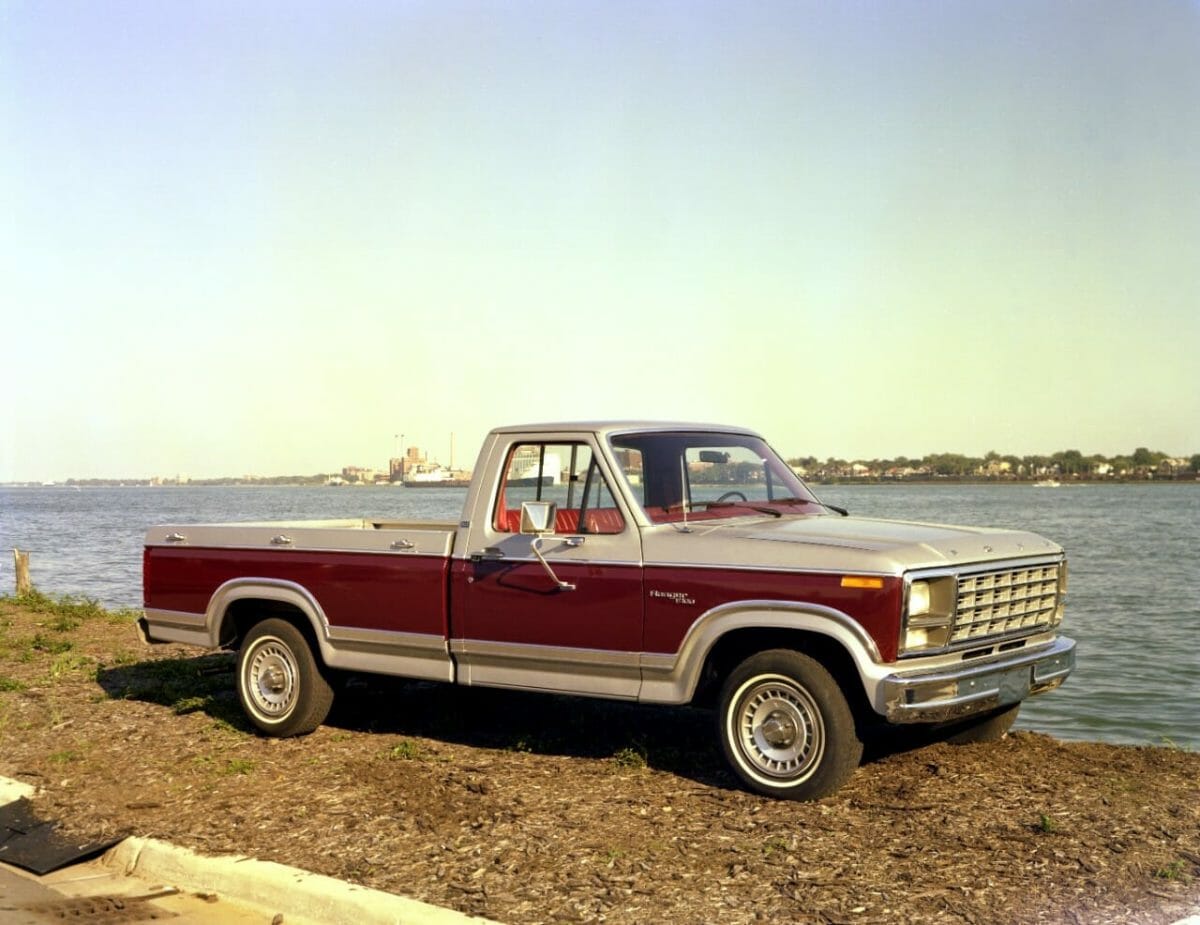
F-150 7th Gen. (1980–1986): A Star is Reborn
With the Eighties in full swing, Ford came in strong with a full F-150 redesign. Something that hadn’t happened since 1965. With a brand-new chassis that would be the foundation until 1997 and a brand-new square-shaped body, Ford also put its Blue Oval logo on the grille for the first time.
Engine options stayed relatively the same with the 3.9L I6 dropping from the lineup and the Windsor 4.2L and 5.8L V8s making an appearance.
As the breadth of the trucks’ abilities continued to expand, Ford continued adding options for the consumer. For the first time, fuel injection made an appearance in the American truck market.
The 5.0L V8 was the guinea pig in 1986, with other engines following suit in the next year. For the seventh-generation F-150, there were 150 options for buyers to choose from.
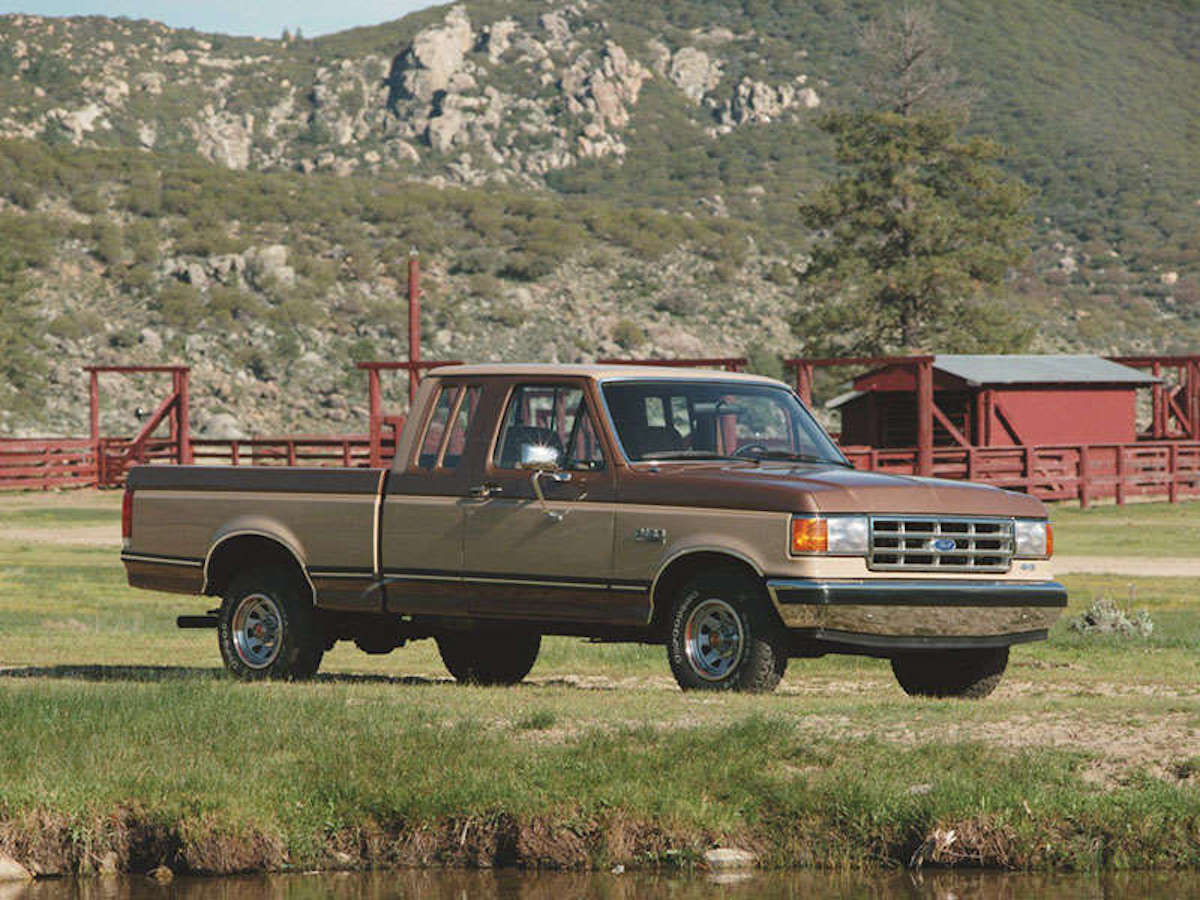
F-150 8th Gen. (1987–1991): Introducing Fuel Injection
In 1987 Ford released the eighth-generation F-150, which was a heavily-reworked version of its predecessor. The retirement of Ford’s Flareside bed was replaced with only Stylesides, and more engines introduced fuel injection after the 5.0L V8’s success.
Ford continued dialing in the F-Series with mostly carry-over engines from the previous generation.
Today, the 4.9L 300 I6, is hailed as Ford’s “unkillable” engine. Ford’s 4.9L 5.0 Windsor has a displacement of 4,942 ccs making it just shy of the magic 5,000 cc number that normally comes with a 5.0L V8 –– but Ford didn’t care. They even used this 302 in the 1968 Shelby GT-350 with a bigger four-barrel carburetor
For the 5.8L Windsor V8, Ford was building them with stronger block castings, making them highly desirable and perfect for future engine modders. The 351 Windsor would often be subject to a combination of the 351 Cleveland V8’s free-flowing heads and the strength of the cast block, making it a “Clevor” for enthusiasts.
Finally, the 7.5L 385 V8 was the last 400 block from Ford and was even crammed into some cars. While it was generally used in larger F-series trucks, as the size of Ford’s cars got smaller, the need for a 400+ block was scarce. Ford retired the 7.5L 385 V8 years later, in 1997.
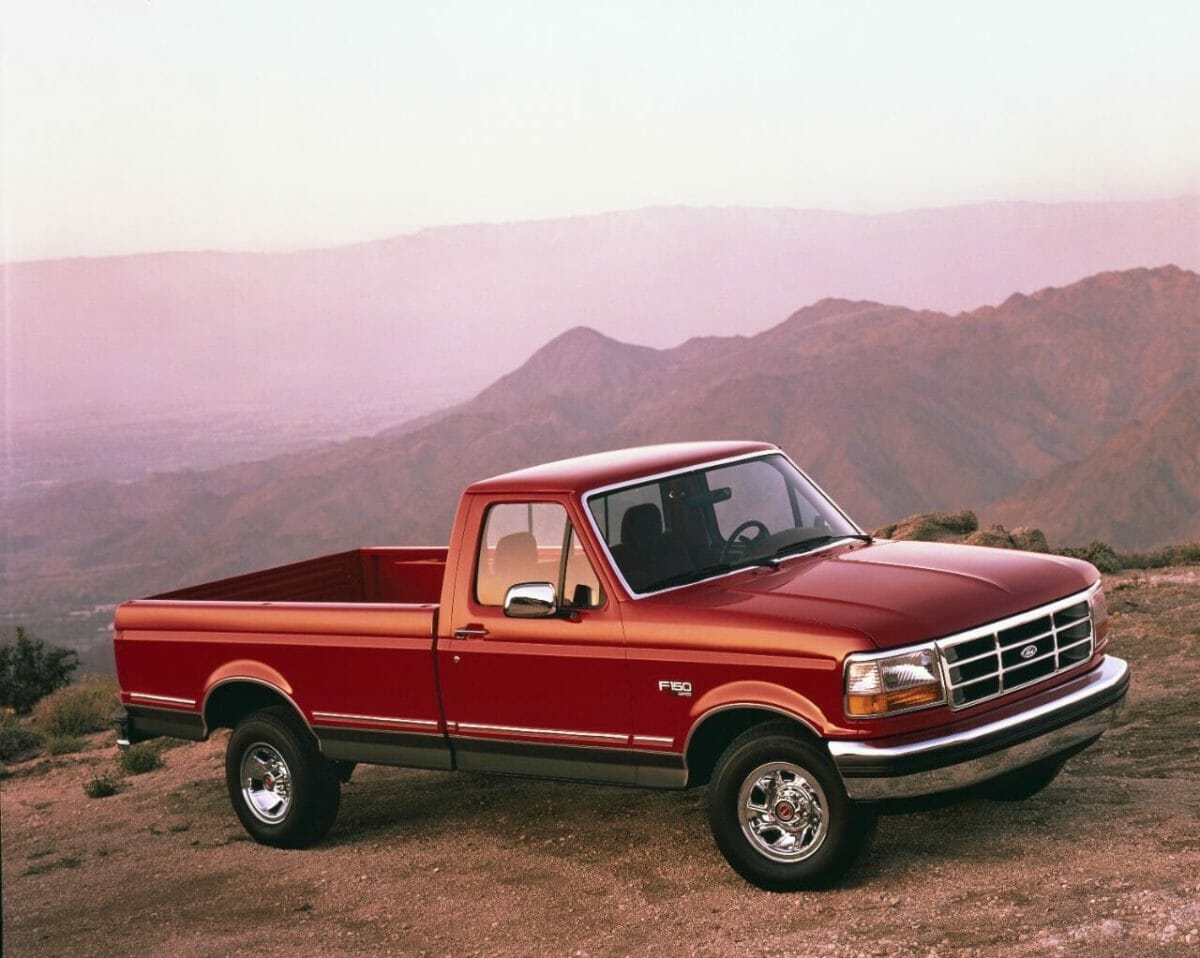
F-150 9th Gen. (1992–1997): Lightning Strikes
The Nineties were a treasure-trove of good things, the song Wonderwall notwithstanding. Ford was quietly releasing its second redesign of the same 1980 truck platform. Included for this generation was a cohesiveness to the shapes of Ford’s other vehicles like the Explorer.
Also, the Flareside truck bed was back after a full six-year ex-communication from the F-150 body design. The changes overall for this generation were minor, and the engines were continued from the previous generation.
The most notable and important update was the release of the Ford Lightning on the heels of Chevrolet’s release of the 454SS. This performance truck was shoved down the road by the high-performance 5.9L Windsor big block with 240 horsepower.
The Lightning came with Firestone Firehawk tires to make sure you kept the truck on the road during spirited maneuvers.
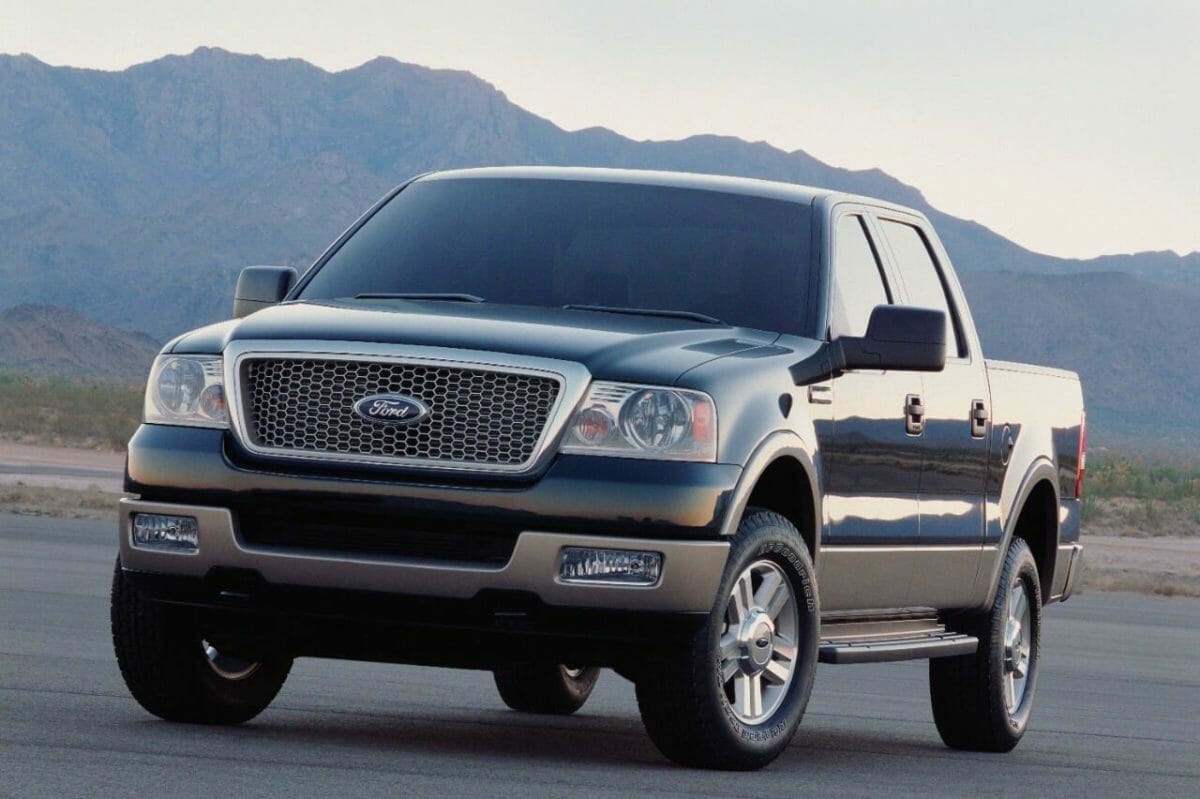
F-150 10th Gen. (1997–2004): Completely New Engines
For the tenth generation of Ford F-series, the automaker capitalized on the growing popularity of trucks as more people chose them as their primary means of transportation.
While ther larger F-series trucks remained available for anyone needing a tough work truck, the F-150 got some upgrades that would steer more consumers in the direction of a “larger Ranger,” which is how Ford marketed it.
In nearly 20 years, Ford hadn’t redesigned the F-150 chassis the way it did for this generation. This included ending the use of Twin I-Beam front axles and replacing them with independent front suspension.
Also with the tenth generation came completely new engines. For the smaller engine option, the 4.2L Essex V6 was used as a direct replacement for the 300 I6 from the previous generation.
A pushrod engine with 205 horsepower, the Essex was a reliable replacement in the anthology of six-cylinder offerings. As a middle engine option was the 4.6L Triton V8, a SOHC 16-valve V8 with 220 horsepower.
Finally, the 5.4L Triton V8 was the largest offering in the F-150, replacing the 5.8L Windsor V8. It was quite respectable with 235 horsepower and a later performance improvement in ‘99, which bumped it to 260 horsepower.
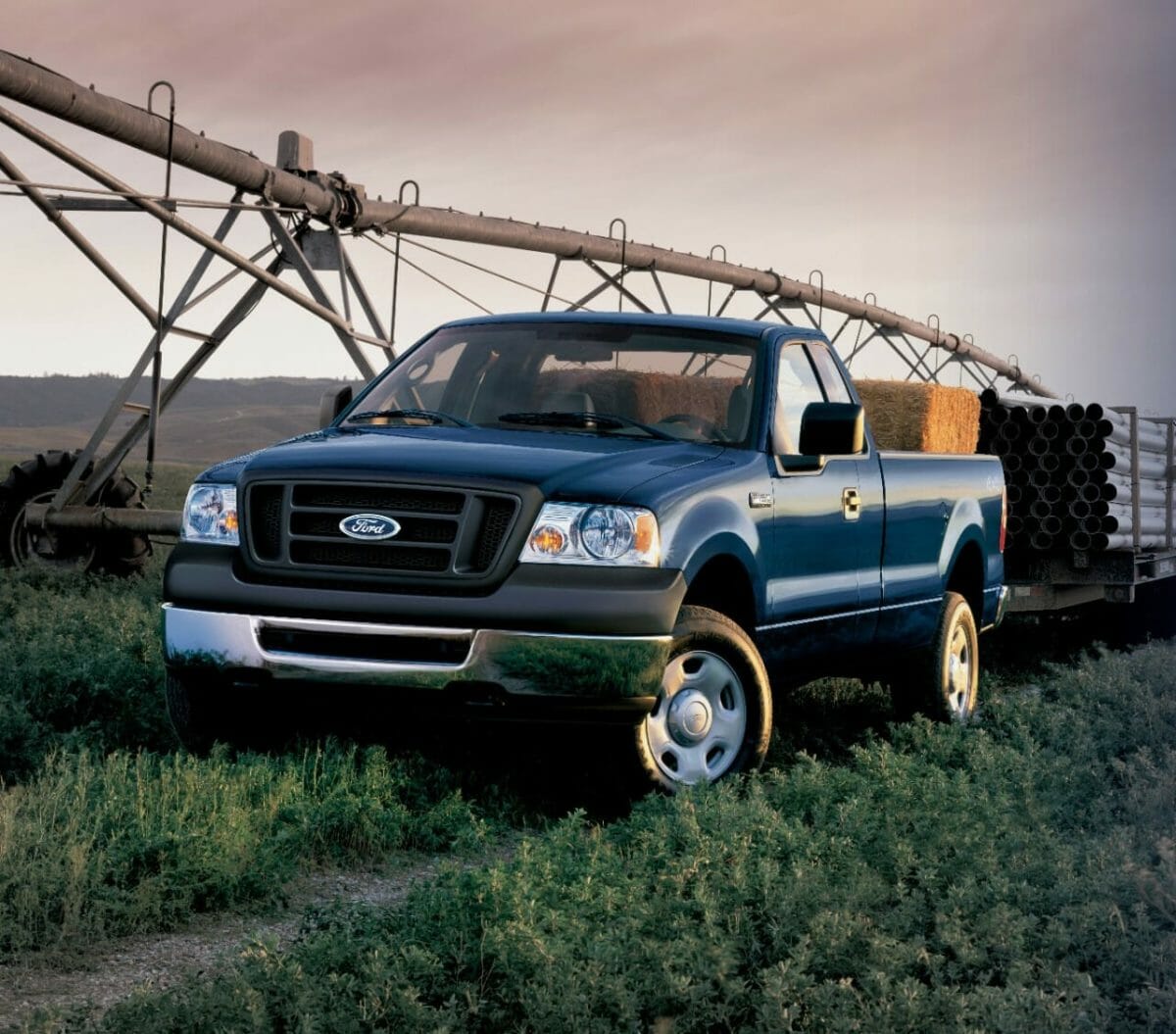
F-150 11th Gen. (2004–2008): Another Full Redesign
In 2004, the F-150 received yet another full redesign with a completely-new, fully-boxed, frame chassis. Updates included new rear-mounted shocks working in conjunction with the standard leaf-spring system to curtail rear movement on rougher terrain, effectively decreasing wheel hop and improving ride quality.
While the external styling changed considerably, the only notable engine change was to the 5.4L Triton V8, employing a three-valve system and retiring the two-valve system. Also interesting, the FX4 package, which was available in 2002 and beyond, earned its place in the lineup with its own trim.
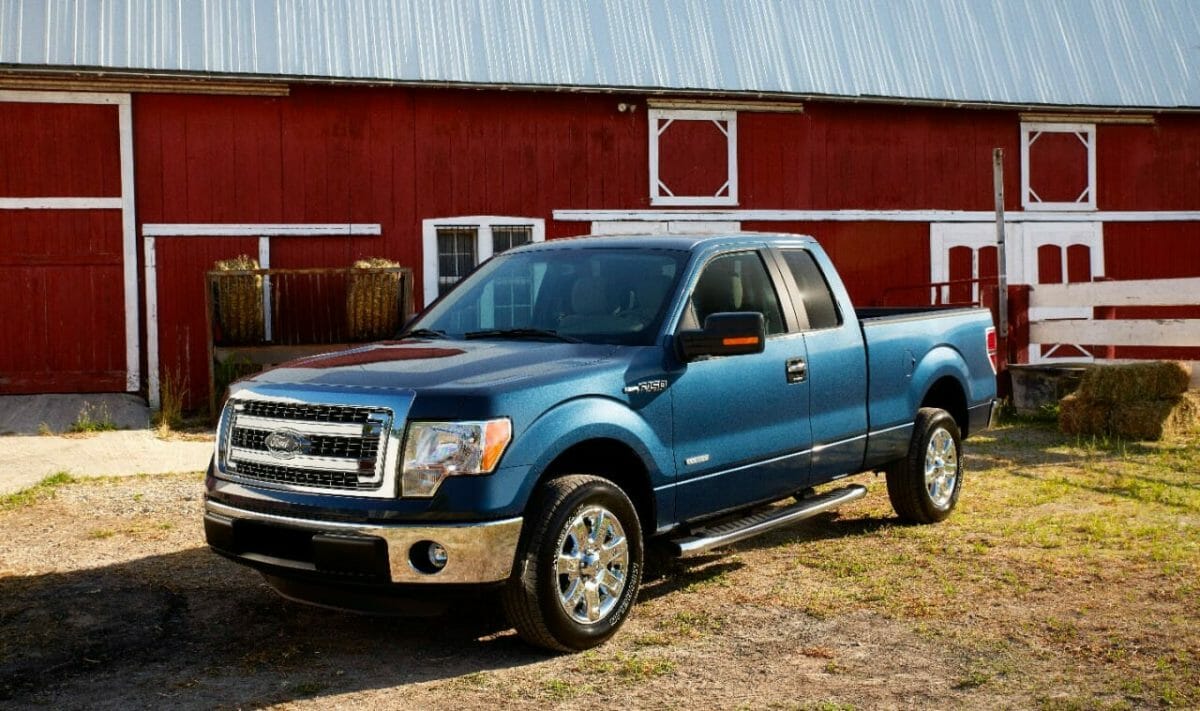
F-150 12th Gen. (2009–2014): Turbos Abound
For big number 12, Ford went in a new direction that revolutionized the truck segment. The age-old adage “no replacement for displacement” met its match once again as Ford rolled out the EcoBoost engine platform.
A 3.5L Twin Turbo V6 is designed to deliver the same performance as a large V8 with 20% better fuel efficiency and 11,300 pounds of towing ability.
As a marketing push in a multi-part YouTube series, Ford employed TV show host Mike Rowe of Dirty Jobs to showcase the brutal beating this new EcoBoost engine could endure.
While it can be a little gratuitous, it’s worth the watch if you’ve never seen it. With fuel efficiency in mind, Ford also added a 3.7L V6 rated at almost 6,100 pounds of towing capacity, making it a highly useful engine.
Also appearing in F-150s in this generation, the 5.0L Coyote V8, with an impressive 9,800 pounds of towing capacity.
As a final option for the higher trim-level F-150s, you could opt for the 6.2L V8. This final V8 also appears in the first iteration of the Ford Raptor (with obvious different goals) in 2010.
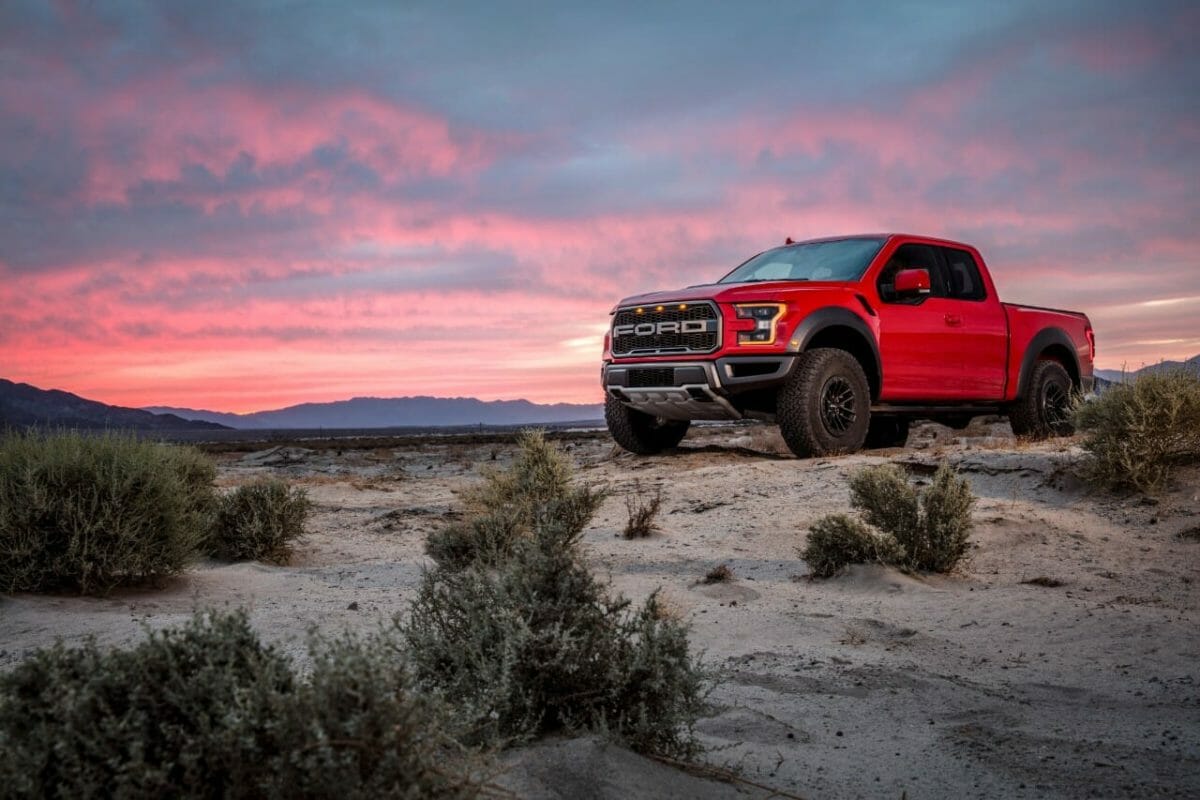
F-150 13th Gen. (2015–2020): F-150 Gets Lighter
During the 2013 Detroit Auto Show, Ford showcased a concept vehicle called the Ford Atlas that would be the inspiration for the next redesign of the F-150’s exterior.
By changing the exterior panels to aluminum, Ford was about to net a weight savings of 750 pounds while maintaining the same shape and capabilities.
The frame remained high-strength steel and the firewall remained steel for safety, but Ford had accomplished quite a feat for the first time–again–in the truck market. However, the engine changes were minimal.
Ford dropped the 6.2L V8 after the success of the 3.5L EcoBoost but kept the 5.0L V8. Also leaving was the 3.7L V6, making the 3.5L V6 (non-turbo) the standard base engine.
In 2017, the YouTubers over at Town and Country TV had a handful of professional auto mechanics reveal which Ford F-150 engine they would choose if they had a choice among all available options. Check out the clip below to see what the pros selected as their most notable F-150 engine.
Finally, the addition of the 2.7L EcoBoost V6 made an appearance for the first time in the F-150.
In 2018, the Ford F-150 was more capable than ever thanks to new features that included an all-new 3.3-liter V6 with port and direct-injection technology and flex-fuel capability, as well as electronic six-speed automatic transmission with normal, tow/haul, and sport drive modes.

The electronic 10-speed automatic included selectable drive modes: normal, tow/haul, snow/wet, eco-select, and sport (which came standard with the 2.7L EcoBoost, 3.5L EcoBoost, and 5.0L V8 engines).
For the 2018 model, the second-generation 2.7-liter EcoBoost now had advanced dual port and direct-injection technology. The enhanced 5.0-liter V8 brought significant upgrades like advanced dual port and direct-injection technology, plus spray-on bore liner technology.
The Insurance Institute for Highway Safety named the 2018 Ford F-150 its Top Safety Pick for the truck segment, scoring it with the highest marks possible.
Later in the generation, the drivetrain was tweaked, making a 3.3L V6 the base engine, replacing the 3.5L (non-turbo) V6.
For F-150 fans who love Raptor power but wanted a more upscale package, Ford’s 2019 F-150 Limited delivered the goods.
“F-150 Limited customers wanted more power, so we combined Raptor’s engine with Limited’s business-class features to deliver Baja fierceness, boardroom style, and the grit to tackle tough jobs,” said Ford’s truck group marketing manager Todd Eckert at the launch.
Rated at 450 horsepower and 510 lb.-ft. of torque, the 2019 Ford F-150 Limited led the competition, offering more power than any light-duty pickup at the time. F-150 Limited also sported a new dual exhaust system with exhaust tips smoothly integrated into new rear bumper cutouts.
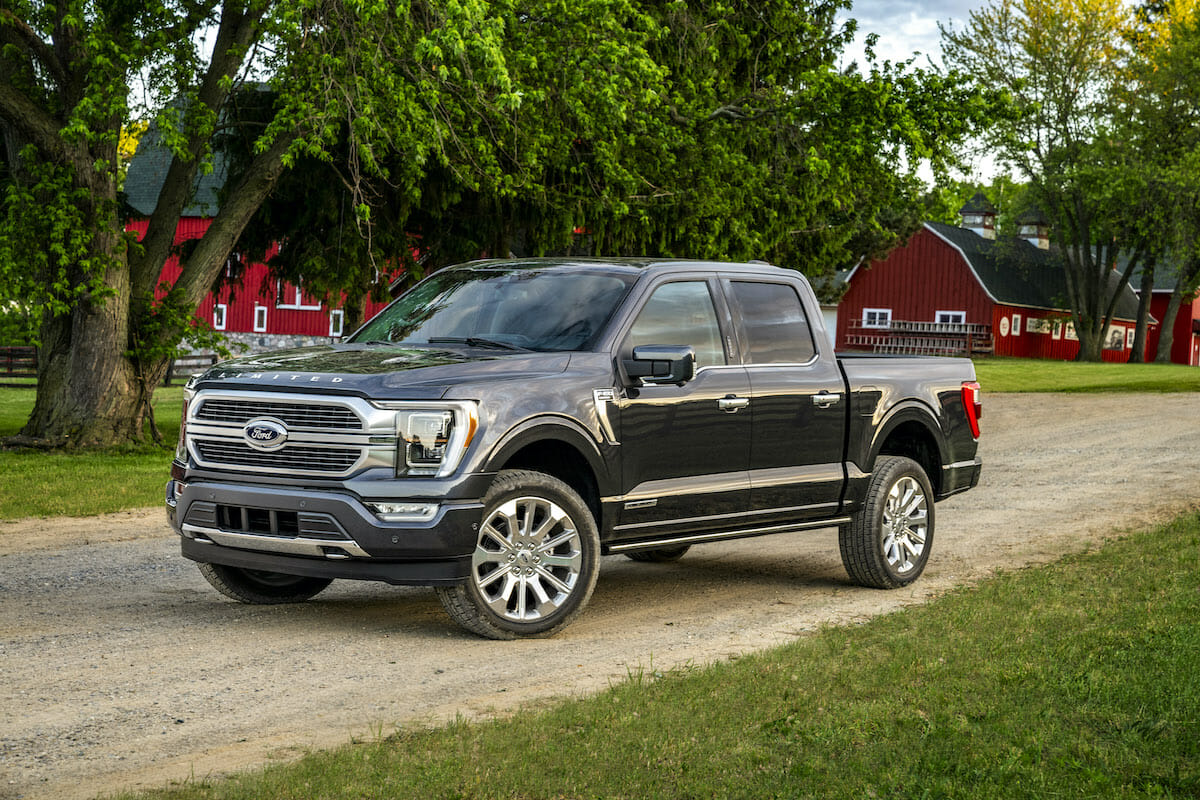
F-150 14th Gen. (2021–Present): 92% Redesigned
The 14th generation represents the most current VF-150 generation at the time this was written. It was released in a live video event in 2020 because of the global coronavirus pandemic.
While the F-150 looks largely the same, it has actually been 92% redesigned or revised. Ford’s pursuit of more towing and payload capabilities read more like a marathon, not a sprint.
The current lineup includes many of the same engines with a couple of new faces:
- 3.3-liter V6 base engine
- both the 2.7-liter and 3.5-liter EcoBoost twin-turbo V6s
- 5.0-liter V8
- new and exciting 3.0-liter turbodiesel V6
The all-new 3.5-liter PowerBoost full hybrid V6 powertrain reportedly delivers the most torque and horsepower of any light-duty full-size pickup.
Available on every current trim level from the F-150 XL to the Limited, the PowerBoost system adds instant electric torque to Ford’s 3.5-liter EcoBoost V6. It is targeting an EPA-estimated range of approximately 700 miles on a single tank of gas and will deliver at least 12,000 pounds of available maximum towing.
PowerBoost combines Ford’s EcoBoost engine and a 10-speed automatic transmission with a 47-horsepower electric motor integrated into the transmission, as well as software calibrated specially for truck use, including drive modes like tow/haul mode to help manage towing heavy trailers.
The electric motor applies regenerative braking energy capture to help recharge the 1.5-kilowatt-hour lithium-ion battery. The battery is strategically packaged underneath the truck to allow for more space in the cab and cargo box for passengers and cargo. The system is capable of sustained battery usage at extreme outside temperatures or under heavy loads.
Wrap Up & Final Thoughts
What an amazing anthology of trucks! There have been countless rabbit trails within the research of the Ford F-150 that could easily extend this article by four times in length.
The F-150 is here to stay. Ford’s consistent innovation and pursuit of the best utilitarian truck is a testament to the Blue Oval’s hard work and dedication to this demographic of buyers.
Their value continues to climb, and no matter what year you buy, you’re guaranteed a piece of truck history whether past, present, or future. No matter what your needs may be, it’s clear that there’s an F-150 to help you do the job. For the weekend warrior auto mechanic, we recommend finding an older pre-’80s model to restore to its former glory.
For the budget shopper or cash buyer, find a 10th-generation F-150. Beware of the ticking noises from cam phaser issues in the 5.4L V8 and the plastic intake manifolds on the 4.6L V8s. Otherwise, they’re solid trucks.
For the truck shopper looking for the best of all worlds, the 2015 F-150 won truck of the year from Motor Trend and is a fantastic balance of gently-used-truck ownership. We recommend the 3.5L EcoBoost V6.
Whatever truck you choose, hopefully, this in-depth look into all the engine options for the F-150 has served as helpful.
Photos: Ford
